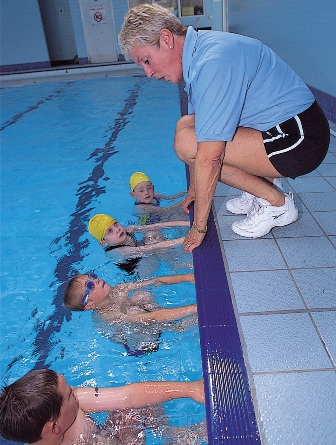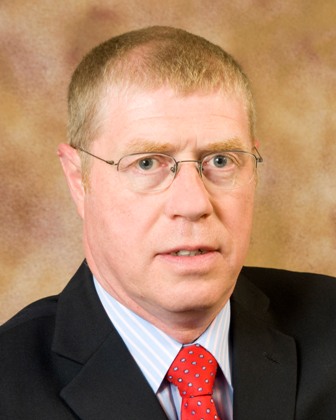
On the edge: offering achievement, structure and direction
Swimming in a new pool
With a new academy initiative launching in January and a new logo already on display, the Swimming Teachers’ Association is confident about the future of its business. The Leisure Review went to Walsall to speak to Alan Siddons, the STA business development director, to find out why.

On the edge: offering achievement, structure and direction
As the December/January issue of The Leisure Review was going to the proverbial press the Swimming Teachers’ Association (STA) was launching a new initiative in the delivery of learn-to-swim classes. From January 2011 the STA will be running the whole of Shropshire County Council’s learn-to-swim programme under a five-year agreement that the STA describes as the first of its kind. During December the scheme, branded as the Shropshire Swimming Academy, is being introduced to the public at the county’s six pool sites (a seventh site is expected to be added early in the new year) and then the county will embark on a partnership with the STA to deliver a standardised programme for swimming lessons and a single pricing structure for every Shropshire resident. The scheme will also provide free swimming for all children under eight at all of the academy sites.
The delivery of this partnership with Shropshire is a source of some satisfaction for Alan Siddons, the STA’s business development director for whom the official start of the scheme marks the first anniversary of his arrival in post. He is pleased that the establishment of the Shropshire Swimming Academy as a commercial joint venture has delivered a win-win situation for the county and the STA. By way of context, he explained that the council needed to do something to prevent pool closures and the STA was able to offer a proposal that delivered significant savings when compared to how they were operating. Further discussions on how they might work together resulted in the joint venture being discussed, examined and agreed.
“It’s all very exciting for us,” Siddons said, “but it’s quite interesting when you look at why parents want their kids to learn to swim. Invariably it’s because they want them to get out of the river if they fall in. It’s about saving their lives. Second, they want to give them a bit of structure in their lives, a sense of achievement and something to work towards. When you ask parents whether it must be in line with the national plan for teaching swimming half of them don’t know what it is. They are not bothered what’s on the certificate as long as their kid has gone along, learned to swim, had a bit of structure and had fun. If it’s five minutes down the road that’s even better. We meet all those criteria.”
With a background in sales, at first for Raleigh bicycles in the 1970s and latterly in the print industry, Siddons came to the leisure sector at the request of STA managing director, Roger Millward. Siddons was pleased to find a new challenge in a markedly different commercial environment but recognised it as a commercial environment all the same. “The basis of it my approach is this,” he explained. “The STA has progressed over the last 15 years quite dramatically under Roger’s leadership, has grown as a business and grown in the areas it now caters for, and the STA were perhaps in a situation where it needed to go up a gear in order to move forward.” That is the task he has undertaken.
“My feeling when I got into the organisation was that here was an absolutely first-class product, first-class service but in reality it was perhaps the industry’s best kept secret. It didn’t go out sufficiently to market itself. We needed to increase our exposure but at the same time to demonstrate a change and a movement forward. We needed to update the brand and give it a fresher, cleaner look, something that would represent the growth that we are starting to enjoy.”
A new logo was commissioned with a design brief to illustrate the four key strands of the STA’s business. Then Siddons set about a new way of marketing to challenge some of the misconceptions that he found prevalent among some of the organisations that had been identified as potential customers. He talked to numerous local authorities and private operators in an attempt to dispel the STA’s image, which he described as “the poor man’s ASA” [Amateur Swimming Association].
“There was a lot of resistance to change and we essentially went along to challenge people and say, ‘You say that we’re not as good but what aspect are we talking about?’ What we found when we challenged them on that basis was that they couldn’t actually tell us what was wrong with our business. If we then said, ‘OK, is this a firm belief or something you’ve been indoctrinated with?’ we found that eventually people started coming back to say, ‘Maybe we’re criticising something we haven’t actually tried. Let’s see what you’ve got.’”
That offer is as displayed on the logo: swimming teaching, life saving, first aid and leisure management. This last aspect includes pool plant operation, an area of business that has begun to thrive. “Pool plant is absolutely booming at the moment,” he said. “When I came in it represented an area of our business but wasn’t one of our major areas. Now it has rocketed.” A new STA pool plant course revised and launched last January has had something to do with this growth but Siddons acknowledged that a change in the Institute of Sport and Recreation Management’s tutor policy for its own pool plant course had generated a lot of interest in the STA’s course. In particular, he suggested that a number of pool plant tutors wanting to deliver their own courses are finding that the STA’s approach to delivery of courses provides a better fit for their own businesses.
“One of the big things that people realise when they talk to us is that we’ve got tremendous flexibility,” Siddons said. “My long-term plan is for any customer, whether in the private or public sector, to have a choice, a straight choice between two organisations delivering with equal credibility. We’ll never be as big as the ASA but I believe that with the level of business we are picking up we are starting to have a voice in the marketplace. Should we not therefore be talked to by the people making decisions? Our mission, vision or goal is to grow the business so that we become certainly an equal in the marketplace but, above all, that we are taken seriously and, above that, that we become very much respected and recognised for what we do.
“It has been difficult for us because there are people in both the public and private sectors who have arrived in positions of power, for want of a better word, having gone down a set path –with the RLSS [Royal Lifesaving Society], the ASA or whatever – and firmly believe that this is the way it should be done. I don’t have a problem with that but there are two things I don’t understand. One is that if a local authority, faced with the cuts that have to be made now, can get the same product without compromise on quality or standards, albeit with a different brand on the certificate, surely it has to be a consideration? Second is the private sector’s need to derive profitability to ensure reinvestment and longevity. They need to maximise profits but have difficulty putting prices up in this market so they need to look to reduce costs. If you can do that without reducing quality, why wouldn’t you do that? We found a complete block from private operators when I arrived but they are starting to talk to us. There is a realisation.”
As well as a business, the STA is a membership organisation with a lengthy history. This aspect of the organisation prompted the question regarding the extent to which the STA sees itself as a representative body and whether it has any interest in the machinations and mergers of other representative bodies in the leisure sector. Siddons looked rueful. “I went to the ISPAL conference and I sat and watched the launch of the chartered institute of sport. I listened to a presentation that said, ‘We are going to be the voice of sport, we’re going to take the representation forward and speak on your behalf. If ISRM and ISPAL come together we’ll have some 4,000 members,’ or whatever the figure was. I was shaken by that because here we are as an organisation of 6,000 members and nobody has actually consulted us or canvassed our view.”
With a shrug, we moved on and the conversation turned back to the Shropshire scheme. Siddons is particularly pleased with the inclusion of free swimming as part of the partnership arrangement. While the disappearance of funding for the free swimming initiative may be a cause for regret, he acknowledged that not all swimming providers had recognised its value; some authorities said free swimming had brought new people in, others that the same people were swimming but at no cost. Like the Welsh scheme, the English free swimming initiative had all the hallmarks of a rushed job. Siddons noted that proper consideration based on quality and cost-efficiency was an essential part of any investment decision, adding that quality and cost-efficiency were the hallmarks of the STA’s approach.
“It’s a win-win. What has anybody got to lose? If you ask the question and don’t like the answer, fair enough. But if you’re never asking the question, never looking through the shop window at what’s on offer, then in my view you’re not fulfilling your responsibilities.”
The Leisure Review, December/January 2010/11
© Copyright of all material on this site is retained by The Leisure Review or the individual contributors where stated. Contact The Leisure Review for details.
Download a pdf version of this article for printing
